Quick Answer
Proper greenhouse ventilation keeps your plants healthy by regulating temperature, reducing humidity, and ensuring fresh air exchange. Whether you're using roof vents, louvres, or fans, airflow is essential to prevent plant stress, disease, and heat buildup—especially during peak growing season. A well-ventilated greenhouse supports stronger, more productive crops year-round.
- Quick Answer
- Why is Greenhouse Ventilation So Important?
- What Are the Main Types of Greenhouse Ventilation?
- How Much Ventilation Does Your Greenhouse Need?
- How Should You Ventilate Through the Seasons?
- What Mistakes Should You Avoid?
- How Can BC Greenhouse Builders Help Your Breathe Easier?
- Final Tips for a Fresh, Healthy Greenhouse
A well-ventilated greenhouse is the foundation of strong, healthy plants. Whether you're starting seeds, growing food through the seasons, or cultivating specialty crops, airflow plays a critical role in maintaining balanced temperature and humidity. This guide will walk you through the essentials of greenhouse ventilation, from natural and mechanical options to seasonal strategies and smart accessories.
Why is Greenhouse Ventilation So Important?
A greenhouse is designed to trap warmth and protect your plants from elements, but all that trapped air can quickly lead to problems if it isn't moving.
Here's why ventilation matters:
- Temperature Control: Warmth fuels plant growth, but overheating can stress or damage crops, especially in the summer.
- Humidity Reduction: Excess humidity encourages mold, mildew, and fungal diseases.
- Fresh Air Exchange: Ventilation replenishes carbon dioxide, supports healthy respiration and discourages pests.
With the right setup, your greenhouse stays comfortable and balanced no matter the weather outside.
What Are the Main Types of Greenhouse Ventilation?
Natural Ventilation
Natural airflow relies on openings that allow warm air to rise and escape while drawing cooler air in.

Sidewall Louvres
Adjustable vents near the base help pull in fresh air at plant level.

Doors
Propping them open on warm days boosts cross-ventilation.

Roof Vents
These allow hot air to escape from
the top of your greenhouse.
Automatic versions, like he type in
BC Greenhouses, open and close as temperatures rise or fall.
Mechanical Ventilation
Mechanical systems give you more control, especially in larger greenhouses or extreme climates.
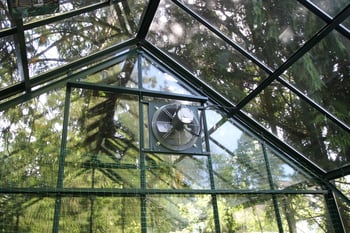
Exhaust Fans
Pull hot air out quickly when temperatures climb.
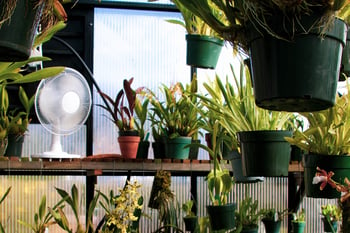
Circulation Fans
Keep air moving evenly to prevent hot or cold pockets.
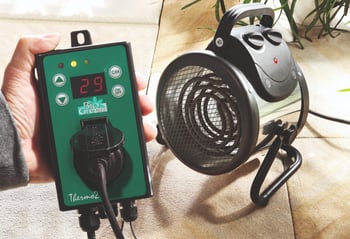
Thermostats and Controllers
Automate fans and vents to maintain steady conditions
Pro Tip: Most growers find a combination of natural and mechanical ventilation works best.
How Much Ventilation Does Your Greenhouse Need?
Every greenhouse is different, and your ventilation needs will depend on its size, structure and location. As a general rule, you'll want roof vent openings to equal roughly 15 to 20 percent of your greenhouse's floor area. All BC Greenhouse Builders greenhouses come standard with automatic roof vents, and the number of vents included is scaled to the size of your greenhouse to ensure proper temperature control. These vents are solar-powered, opening and closing automatically based on interior temperature, so you can spend more time tending to your plants and less time adjusting your greenhouse conditions by hand.
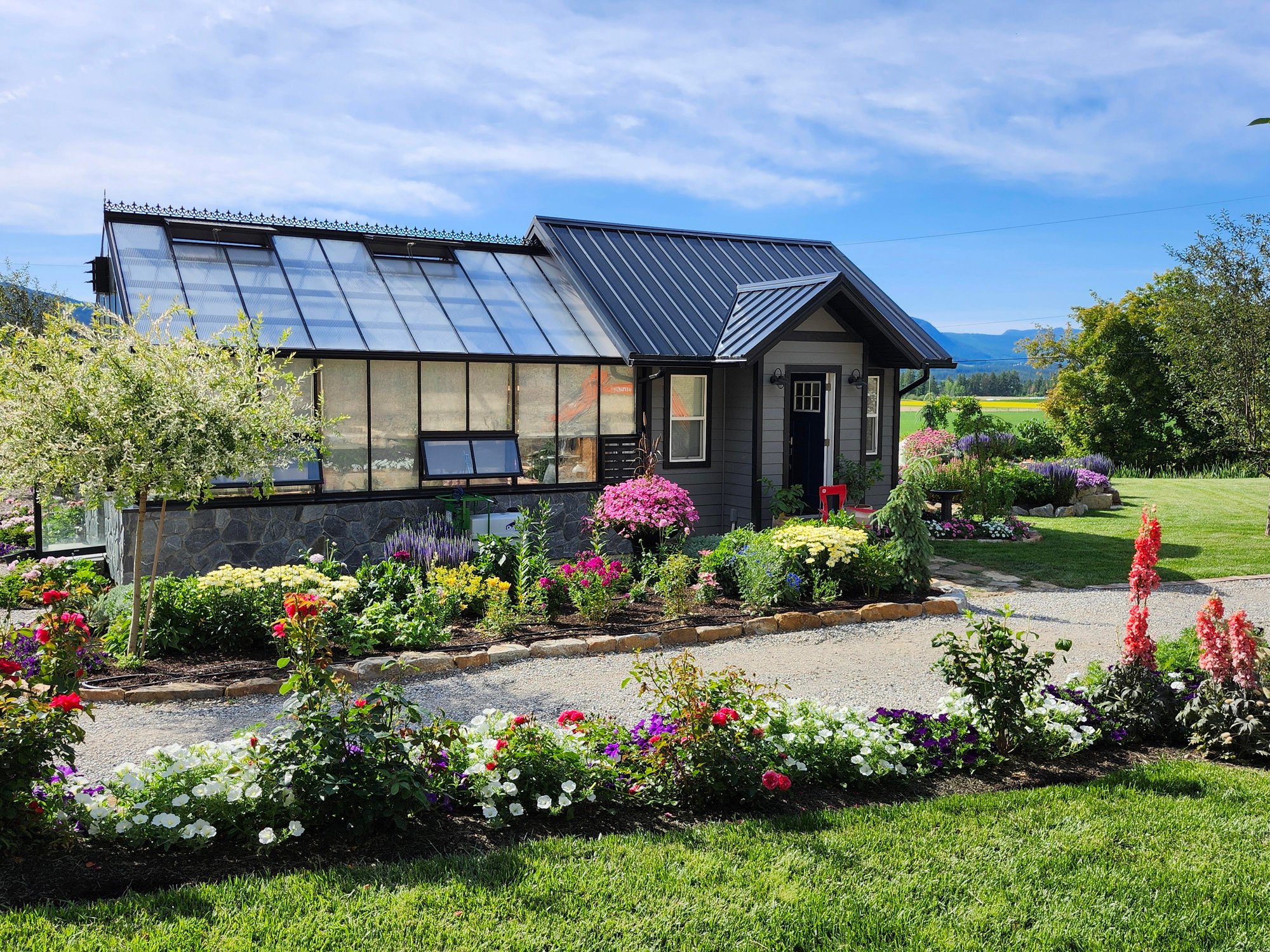
For mechanical ventilation, the sizing of your exhaust fans is equally important. A well-sized fan system should be capable of exchanging the entire volume of air in your greenhouse every one to two minutes during hot spells. This keeps interior temperatures stable and prevents heat stress.
Climate also plays a role. In regions with high humidity or intense heat, you may need to increase your airflow capacity beyond standard recommendations. Additional vents, shade cloth, or higher-capacity fans might be necessary to maintain plant health.
Not sure where to start? Out team can help you calculate exactly what your space requires.
How Should You Ventilate Through the Seasons?
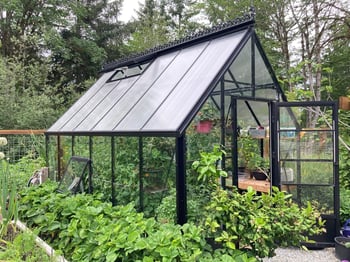
Spring and Summer
- Keep all vents and doors open during the hottest part of the day
- Use shade cloth to block excess sunlight and reduce heat buildup
- Run exhaust fans and circulation fans consistently

Fall and Winter
- Balance fresh air intake with heat retention
- Open vents briefly to release humidity without losing all your warmth
- Watch for condensation and ajust airflow to prevent mold
Adjusting your ventilation strategy seasonally helps maintain a healthy environment year-round.
What Mistakes Should You Avoid?
Even experienced growers can run into problems. Keep an eye out for these common missteps:
- Underestimating the size or number of vents needed.
- Relying only on fans without natural airflow pathways.
- Forgetting to adjust ventilation as seasons change.
- Skipping regular cleaning and maintenance of vents and fans.
Staying proactive helps you avoid costly mistakes and protects your crops.
How Can BC Greenhouse Builders Help Your Breathe Easier?
At BC Greenhouse Builders, we've spent decades helping gardeners create well-ventilated spaces that grow healthier plants.
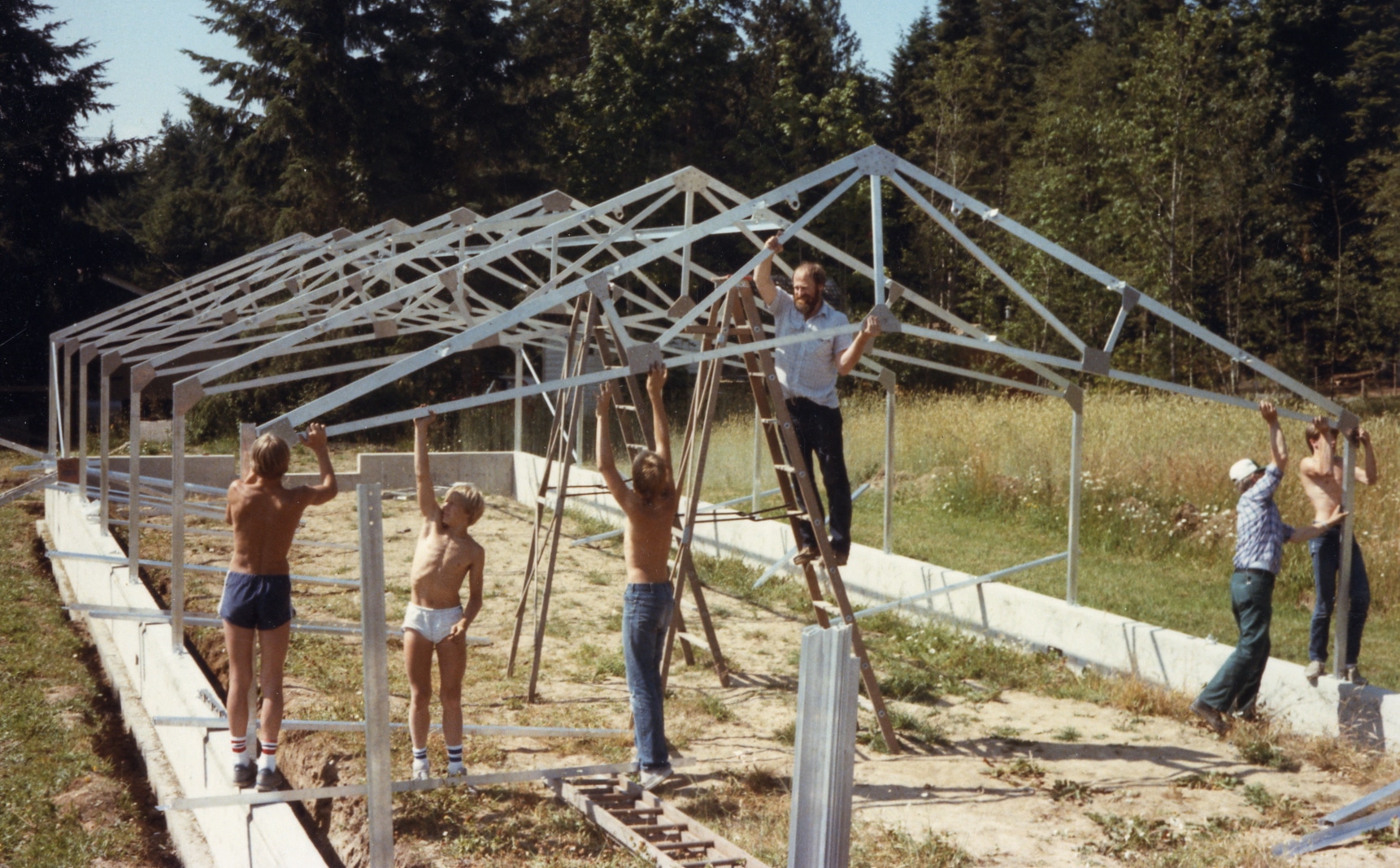
Here's how we can support you:
- All our greenhouses come standard with automatic roof vents
- We offer a variety of upgrades, from extra sidewall louvres to solar ventilation kits.
- Our team can help design a custom ventilation plan to suit your local climate and growing goals.
Final Tips for a Fresh, Healthy Greenhouse
Great ventilation is one of the simplest ways to create a thriving, productive space. Whether you're updating an older greenhouse or planning a new build, a little extra airflow can go a long way.
Need help choosing the right ventilation setup?
Contact our team or explore our catalog to see what's possible!



